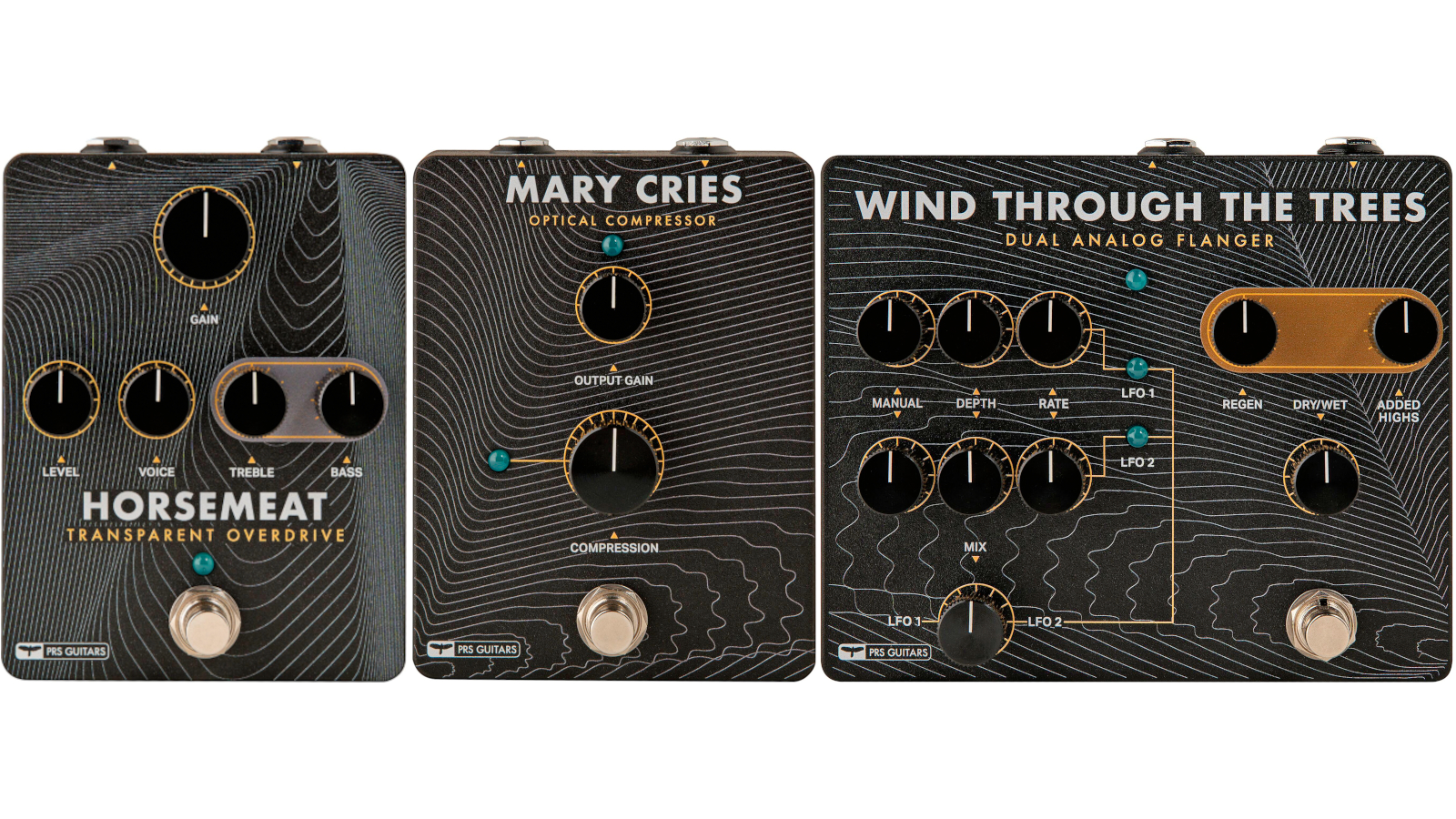GuitarPlayer Verdict
The Horsemeat is a flexible machine with the EQ power to deliver happening tones with different guitars and amps. The Mary Cries ‘LA-2A in a box’ could turn out to be one of the hippest pedals on your board. And the Wind Through the Trees is a beauty of a beast that signals its arrival on the stompbox scene in a big way.
Pros
- +
Horsemeat: A rich-sounding medium-gain distortion box with flexible EQ and lots of output
- +
Mary Cries: A smooth-sounding compressor that can also double as a potent signal booster
- +
Wind Through the Trees: Delivers a wide range of flanging and more outlandish effects
Cons
- -
Horsemeat: None
- -
Mary Cries: None
- -
Wind Through the Trees: A volume control would be handy
You can trust Guitar Player.
After initially establishing his reputation with electric guitars, and following with acoustic guitars and amplifiers, it seemed an inevitability that Paul Reed Smith would fill the missing link in the signal chain – pedals.
And so here we are looking at three new PRS stompboxes: the Horsemeat Transparent Overdrive, the Mary Cries Optical Compressor and the Wind Through the Trees Dual Analog Flanger.
Designed and assembled in the U.S.A., these elegant pedals feature textured housings and individually etched top panels, true-bypass switching and the ability to run on a nine-volt power supply or a battery (not included).
I tested these pedals with a Stratocaster and Telecaster, as well as a Reverend Crosscut and a Slick SL56 thinline, and plugged into a Fender Deluxe Reverb, a PRS HDRX 20 head and a Peavey Vypyr X2 digital 1x12 combo.
Horsemeat Transparent Overdrive
I couldn’t help notice that putting two of the pedals’ names together gives you “The Wind Cries Mary,” which falls in line with PRS’s recent focus on Hendrix with the HDRX line of amplifiers.
The Horsemeat lives up to the transparent overdrive part by sounding true to the guitar driving it
But that’s neither here nor there when it comes to the Horsemeat Transparent Overdrive, which is its own animal that stands out by having a large gain knob located at the top center, where it’s easy to grab.
Below it are the on/off LED and the level, voice, treble and bass controls. As with the other models in the series, the input, output and adapter jacks are on the front face to allow for placing the pedals close together.
All the latest guitar news, interviews, lessons, reviews, deals and more, direct to your inbox!
The Horsemeat lives up to the transparent overdrive part by sounding true to the guitar driving it. Its core tone is clear and balanced, without excess midrange coloration, while its distortion range is broad and can cover everything from dirty rhythm playing to lead work where a medium-gain OD such as a Tube Screamer or a Zendrive might be called on.
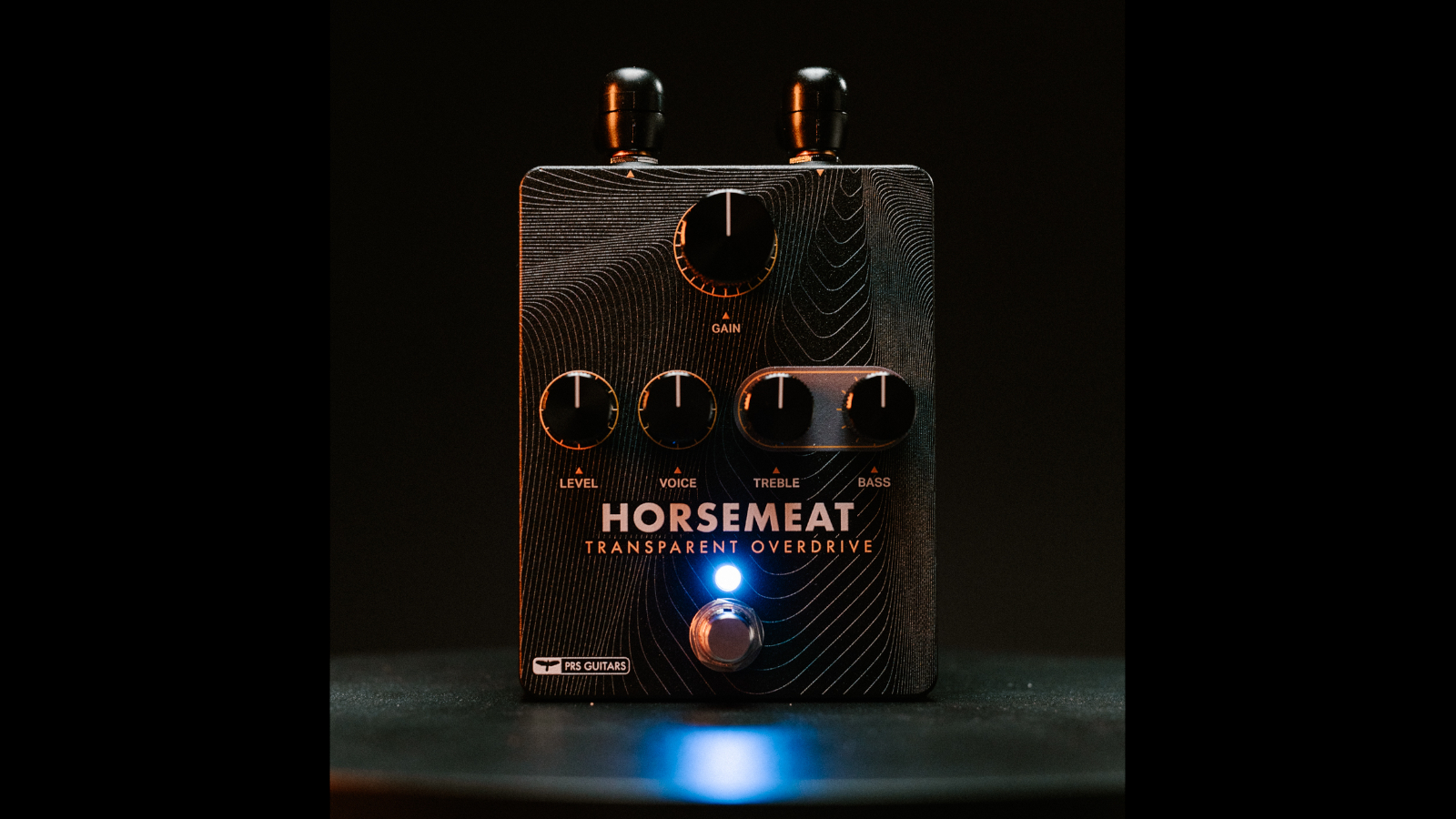
The Horsemeat’s treble and voice controls also bring to mind the old Hermida-designed pedal in the way they interact for enhanced sculpting of the distortion tones.
It’s not clear if the Horsemeat’s controls are similarly configured post gain-stage and pre gain-stage, respectively, like the Zendrive’s, but the net effect is that it’s very easy to dial in different guitars to steer toward darker or brighter textures while maintaining excellent clarity, without drifting into harshness.
The Horsemeat has plenty of output to overdrive an amp’s front end, and it doesn’t compress either
The Horsemeat has plenty of output to overdrive an amp’s front end, and it doesn’t compress either, which makes it feel responsive in a tube-like way to changes in guitar volume and picking strength.
It sounds great when running the gain on the low side and cranking the level to push the amp into breakup, but the Horsemeat also brings the saturated grind when you have to keep the amp volume down but still want the sound of sweating tubes when the pedal’s gain is cranked up.
In all, it’s a flexible machine with the EQ power to deliver happening tones with different guitars and amps, and that’s what makes it a good choice for those who, either by choice or what’s available at the venue, need an OD pedal that plays well with others.
Mary Cries Optical Compressor
The Mary Cries Optical Compressor is based on the famed Teletronix LA-2A rack-mount studio compressor, which reaffirms PRS’s statement as to the new pedals being studio-grade devices.
Designed to level out signal peaks, increase sustain and clarify your sound, the Mary Cries can also be used to boost your signal, and this makes it great for guitar use, where compression always seems to require an increase in level.
The pedal features conveniently stacked controls for compression (with an LED that indicates the onset of compression and gets brighter as it’s increased) and output gain.
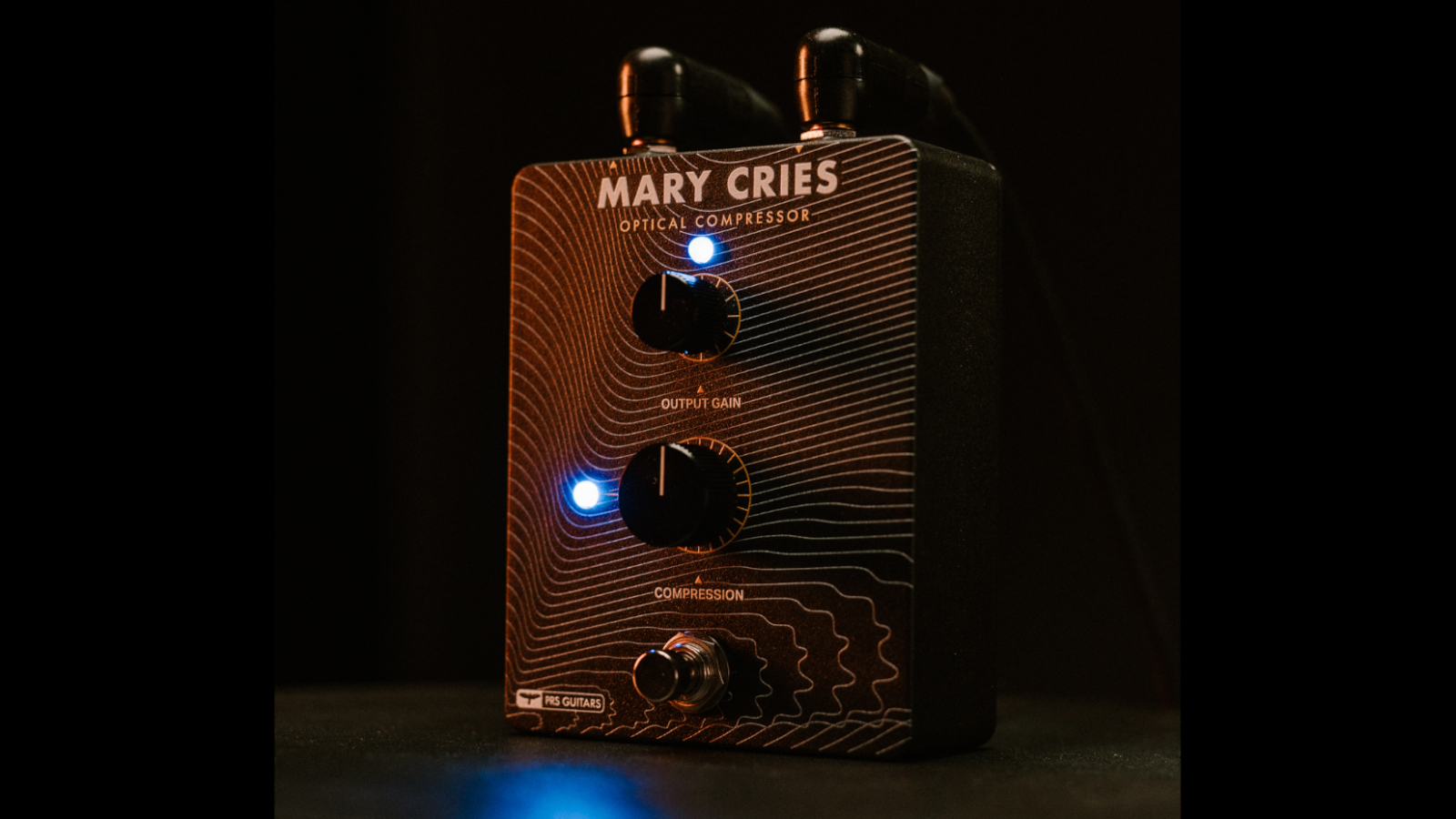
Using it is simple: Find the sweet spot where compression enhances sustain, helps smooth out a rhythm part and/or makes something sit better in a track, and from there adjust the output gain to restore or increase level as needed.
As always with compression, there aren’t any rules – whatever sounds good is good. Just find the settings that enhance whatever it is you’re going for.
And even if you’ve decided that compression isn’t your thing because it kills the guitar attack, the Mary Cries could change your mind about that because of how it can deliver the volume lift of a booster while still letting you squash things to make country licks pop, or a slide solo soar.
Compression isn’t a particularly exciting effect (if you can even call it that), but this LA-2A in a box could turn out to be one of the hippest pedals on your board.
Wind Through the Trees Dual Analog Flanger
Featuring the largest housing of the trio in order to contain 10 twistable functions, the Wind Through the Trees Dual Analog Flanger has two independent flangers.
Each has controls for manual (controls delay time), depth (adjusts sweep depth and sounds more swirly as it’s turned up) and rate, and the latter includes an LED that pulses in sync with the speed.
The Wind Through the Trees Dual Analog Flanger has two independent flangers
The WTTT delivers such a broad palette of effects that taking the manual’s advice and setting all the controls to noon is a good way to start exploring the myriad ways that a pair of flangers can be dialed to create everything from classic swooshing effects – which you can quickly sample by using
There’s also a mix control for blending the two flangers (a.k.a. LFO-1 and LFO-2), a global regeneration control that feeds the affected signal back into the front of the signal path to increase the intensity, an Added Highs control to restore lost high frequencies at the output stage, and a global dry/wet control.
It’s an adventurous pedal to say the least.
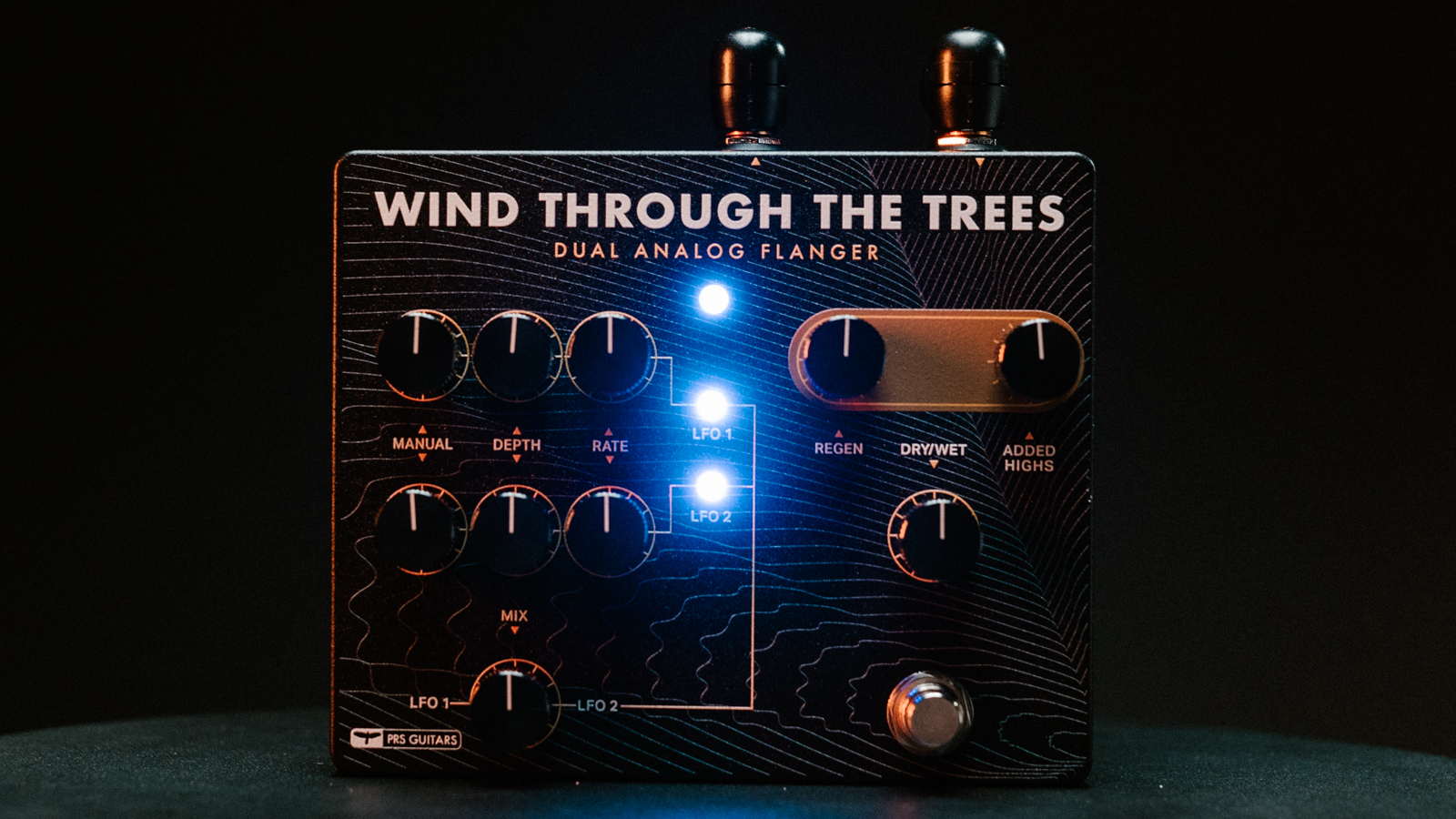
suggested settings in the manual – to dramatic pitch-bent sounds, eerie whistling tonalities and things that sound like alien chatter and ’50s-style sci-fi sound effects.
All of this can be summoned by using disparate settings on the LFOs, adjusting mix ratios to allow one flanger to reign supreme over the other, turning up the regeneration and using Added Highs to keep it all sounding clear and detailed amid the sonic mangling.
An impressive debut thanks to the controllability it offers, its rich analog sound and super low noise
For my own pedestrian needs, I could use LFO-1 set to a slower speed and blend in LFO-2 manually to add color, or turn it all the way to the right for a totally different flanging effect and speed.
Having a foot switch to toggle between the LFOs would be nice, as would a volume control or trim pot to give the flanging some boost when it’s switched on.
The Wind Through The Trees Dual Analog Flanger is an impressive debut thanks to the controllability it offers, its rich analog sound and super low noise.
PRS has created a beauty of a beast that signals its arrival on the stompbox scene in a big way.
Specifications
Horsemeat Transparent Overdrive:
- CONTROLS: Gain, level, voice, treble, bass. Foot switches for amplitude, octave and magnitude
- I/O: Input, output, 9VDC jack
- EXTRAS: True-bypass. Can be battery powered
- SIZE: 4.75” x 3.50” x 1.75”
- BUILT: Designed and assembled in USA
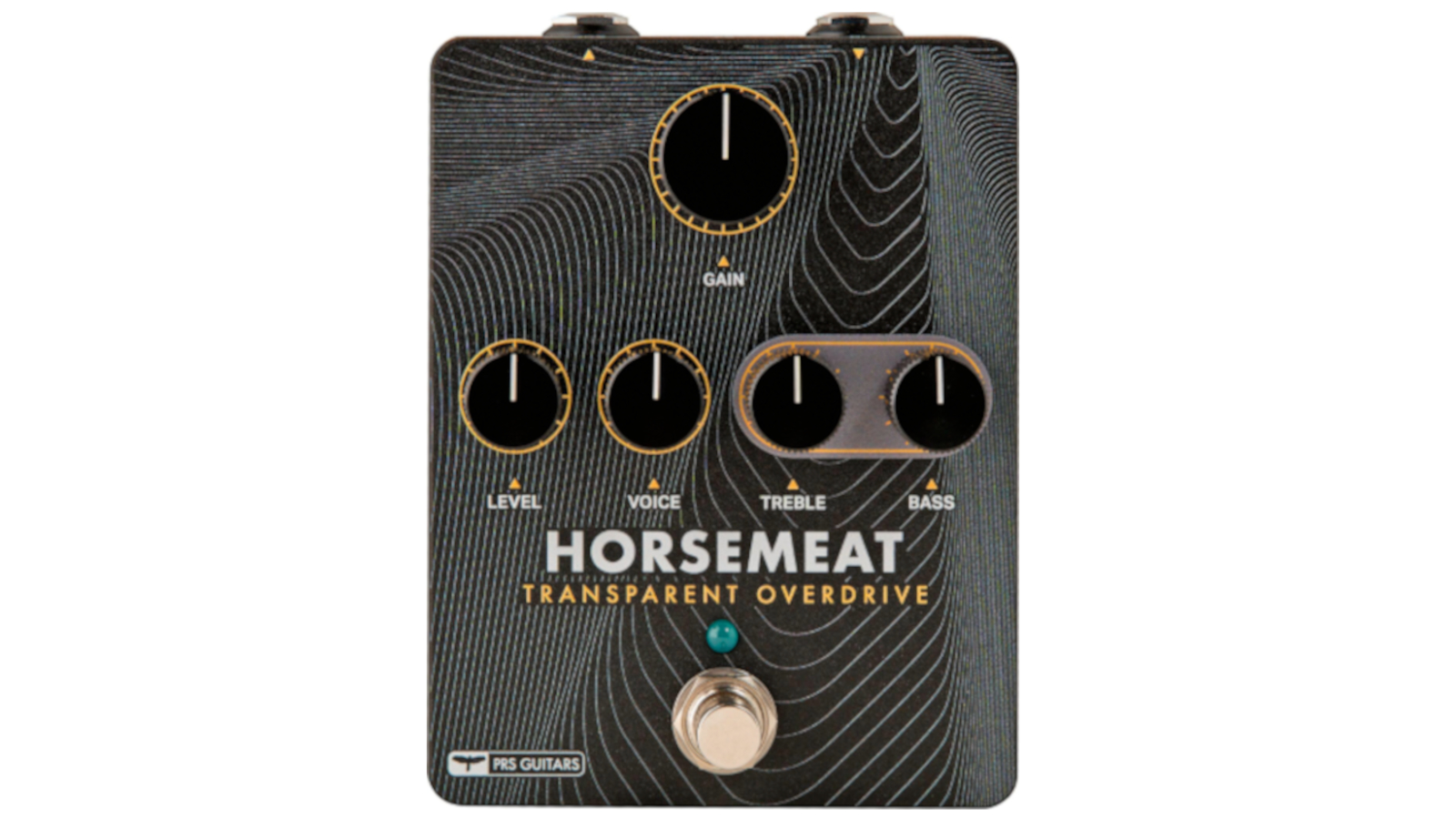
Mary Cries Optical Compressor:
- CONTROLS: Compression (with LED), output gain
- I/O: Input, output, 9VDC jack
- EXTRAS: True-bypass. Can be battery powered
- SIZE: 4.75” x 3.50” x 1.75”
- BUILT: Designed and assembled in USA
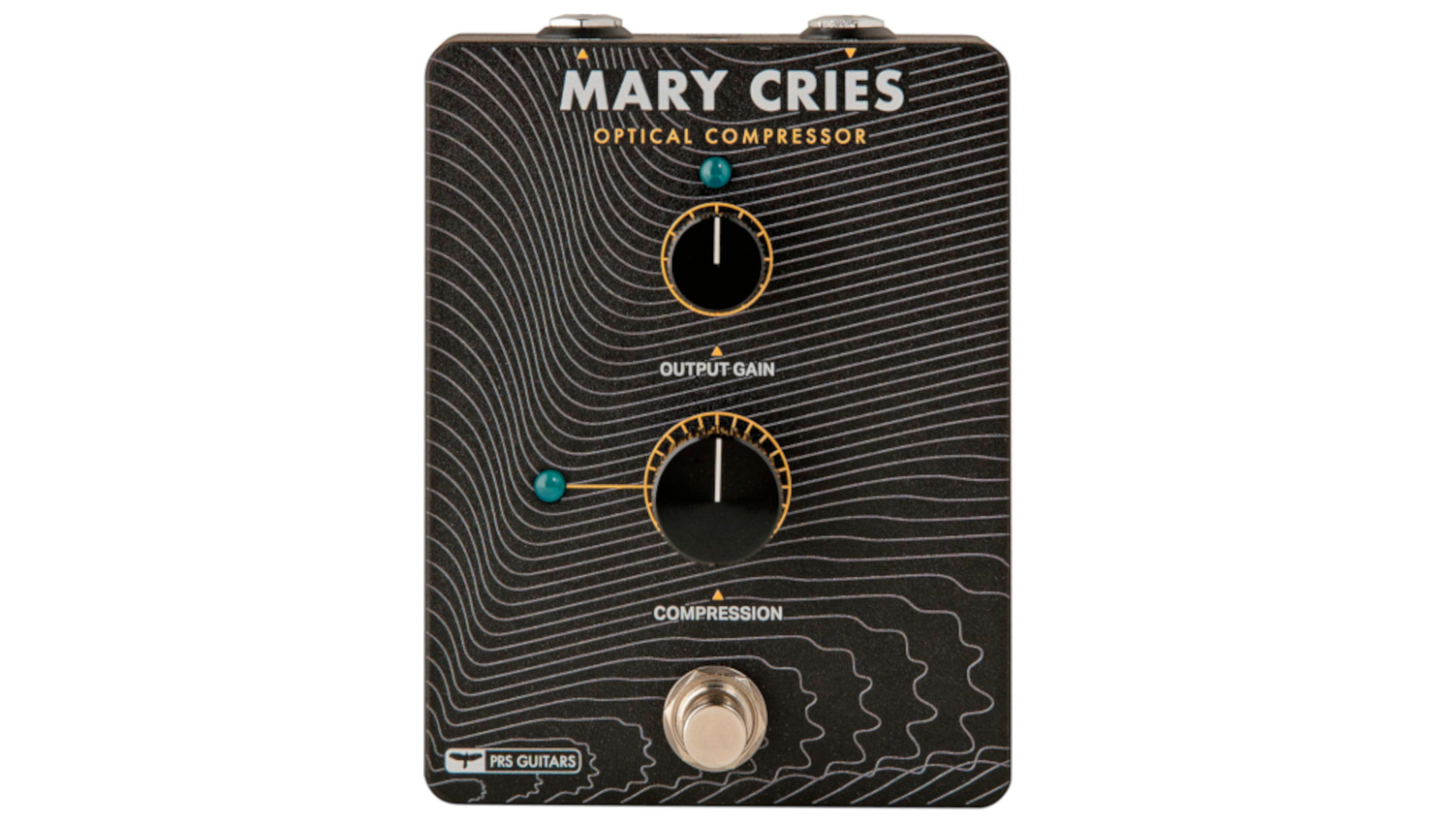
Wind Through The Trees Dual Analog Flanger:
- CONTROLS: (LFO-1) Manual, depth, rate. (LFO-2) Manual, depth, rate. Mix (blends between LFO-1 and LFO-2). Regeneration, Added Highs, dry/wet
- I/O: Input, output, 9VDC jack
- EXTRAS: True-bypass. Can be battery powered
- SIZE: 5.75” x 4.75” x 1.75”
- BUILT: Designed and assembled in USA
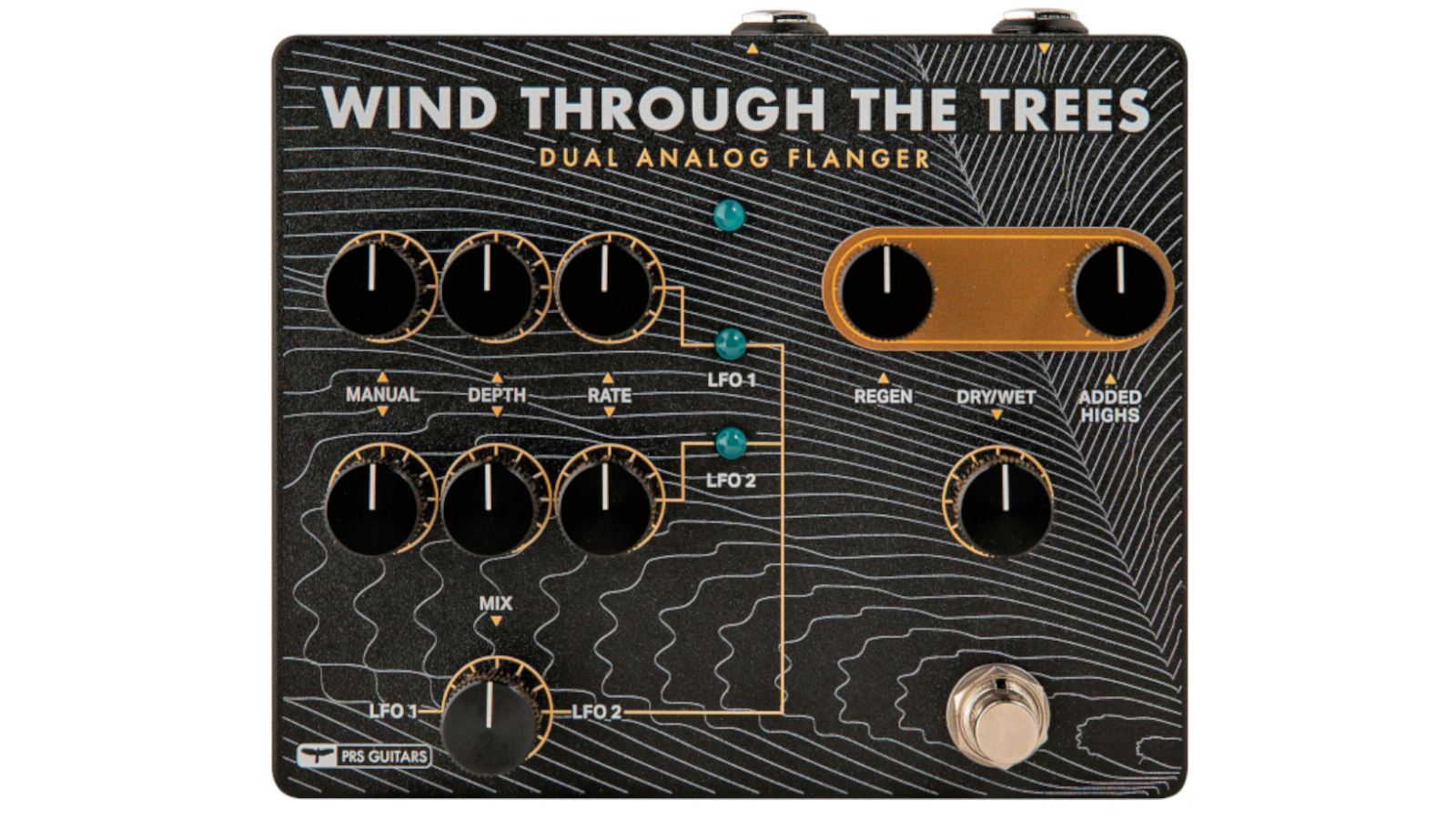
Visit PRS for more information.

Art Thompson is Senior Editor of Guitar Player magazine. He has authored stories with numerous guitar greats including B.B. King, Prince and Scotty Moore and interviewed gear innovators such as Paul Reed Smith, Randall Smith and Gary Kramer. He also wrote the first book on vintage effects pedals, Stompbox. Art's busy performance schedule with three stylistically diverse groups provides ample opportunity to test-drive new guitars, amps and effects, many of which are featured in the pages of GP.
